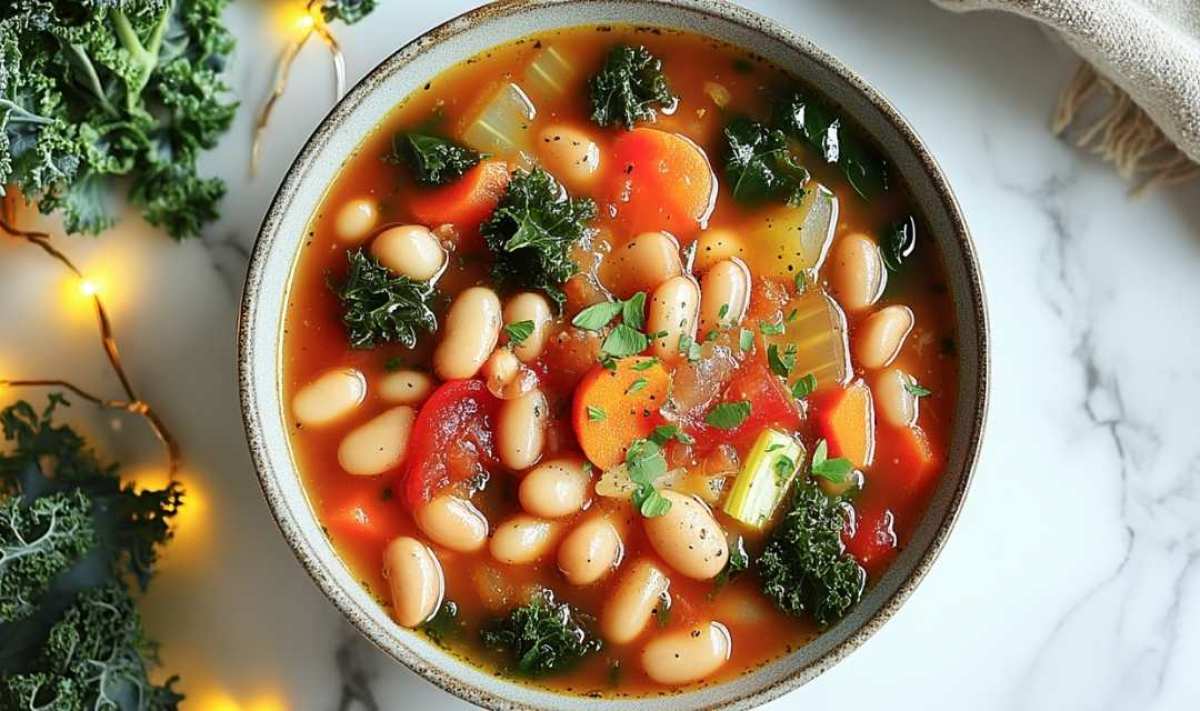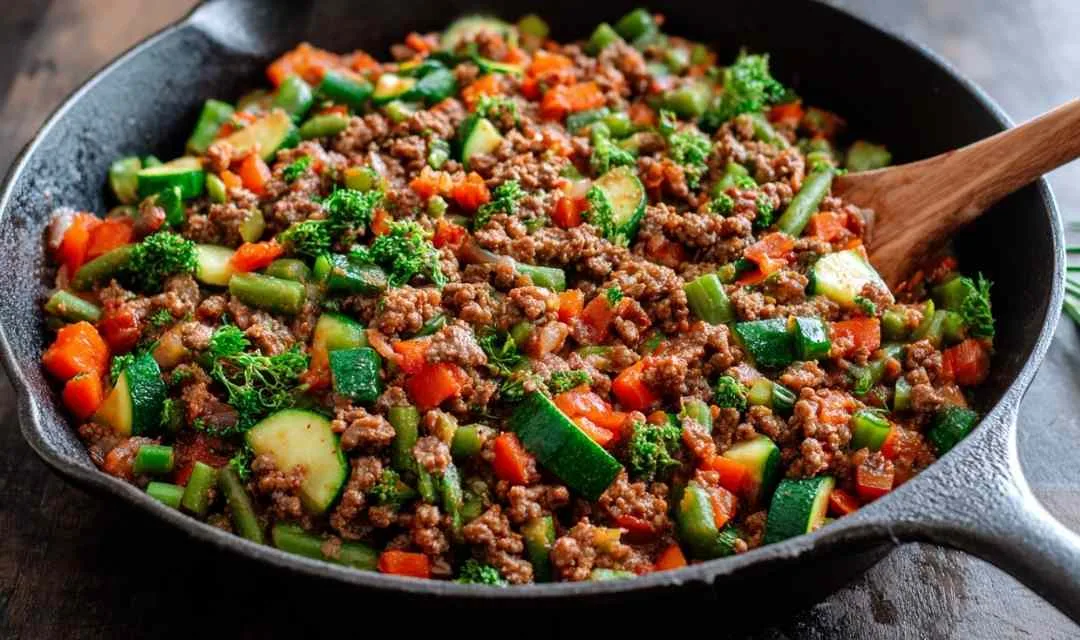Winter minestrone soup brings together the best of seasonal vegetables in one comforting bowl that never disappoints. I remember my grandmother standing at her farmhouse stove, stirring a pot just like this while snow fell outside, telling me that a good minestrone was like a hug from the inside out. This hearty recipe serves 6 and comes together in just 30 minutes.
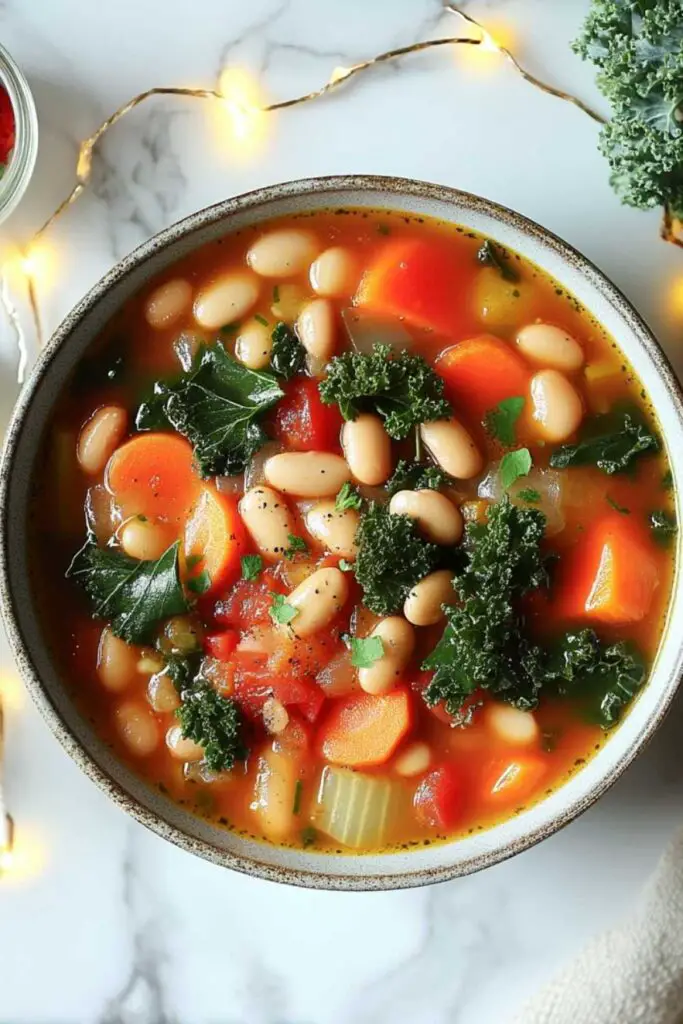
There’s something magical about watching humble winter vegetables transform into something extraordinary. In my kitchen, I’ve made this soup countless times on cold evenings when my family needed something hearty and wholesome. The beauty of minestrone lies in its simplicity – you’re taking what the season offers and creating a meal that fills both bellies and hearts. The aroma of garlic and Italian herbs mingling with simmering vegetables reminds me why I fell in love with cooking in the first place. This recipe has graced my table for decades, and each time I make it, I’m transported back to those Sunday afternoons at Grandma’s farm.
What Makes This Winter Minestrone Soup So Special
I’ve been making winter minestrone soup for over thirty years, and it’s become one of those recipes I turn to when I want something reliable, nourishing, and delicious. There’s a reason this Italian classic has stood the test of time in American kitchens.
- Uses pantry staples and seasonal vegetables you likely already have on hand
- Comes together in just 30 minutes on those busy weeknights when time is precious
- Delivers consistent, crowd-pleasing results that work for both everyday dinners and casual entertaining
- Adapts easily to dietary preferences with simple ingredient swaps
- Creates that perfect balance of hearty beans, tender pasta, and fresh vegetables
- Makes excellent leftovers that taste even better the next day
After years of serving this to my family, I can honestly say the best recipes are the ones that bring people back to the table asking for seconds.
Ingredient Spotlight
Olive oil serves as the flavorful foundation, helping to soften the vegetables and build layers of taste from the very first step.
Onion, carrots, and celery form the classic Italian soffritto base that gives minestrone its characteristic depth and aromatic quality.
Garlic adds that essential savory note that makes the whole kitchen smell wonderful – I always use fresh cloves rather than jarred for the best flavor.
Diced tomatoes provide acidity and body to the broth, creating that signature tomato-based soup we all love.
Vegetable broth becomes the soup’s backbone – I prefer using a good-quality broth because it makes a noticeable difference in the final taste.
Cannellini beans contribute creamy texture and protein, making this winter minestrone soup satisfying enough to serve as a complete meal.
Small pasta like ditalini adds heartiness and helps the soup feel more substantial – the small size ensures every spoonful has the perfect balance.
Kale brings nutrients, color, and a slight earthiness that complements the other vegetables beautifully (be sure to remove the tough stems before chopping).
Italian seasoning ties everything together with herbs like oregano, basil, and thyme that are essential to authentic Italian flavor.
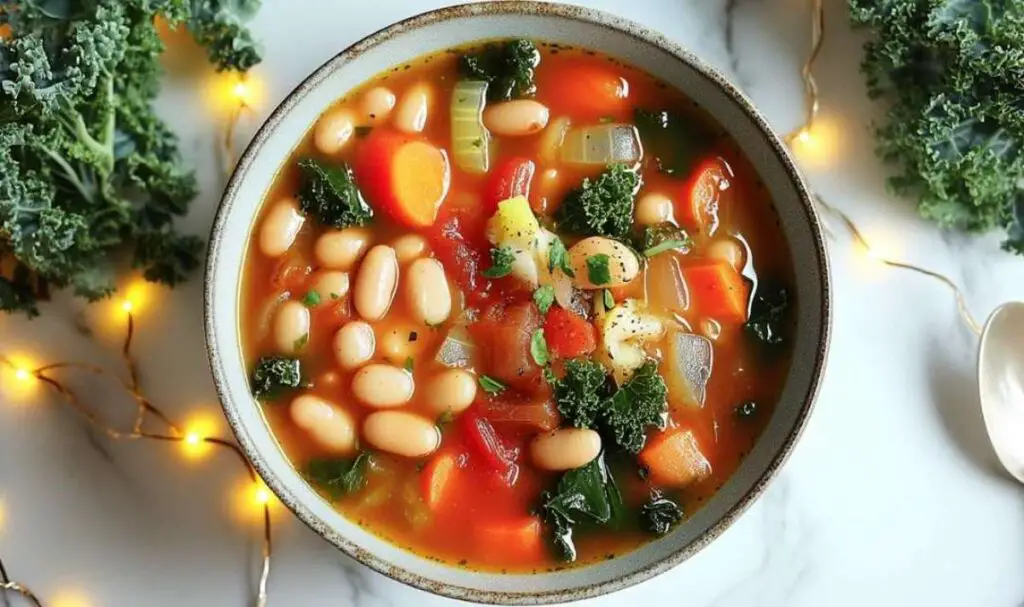
How to Make Winter Minestrone Soup
Step 1. I always start by heating the olive oil in a 4-6 quart pot over medium heat, which ensures the vegetables will soften evenly without burning.
Step 2. Add the chopped onion, diced carrots, diced celery, and minced garlic to the pot, then sauté for about 5 minutes until the vegetables become tender and fragrant.
Step 3. Betty’s tip: Make sure to stir the vegetables occasionally during sautéing so the garlic doesn’t brown too quickly and become bitter.
Step 4. Stir in the diced tomatoes, vegetable broth, rinsed and drained cannellini beans, small pasta, chopped kale (stems removed), Italian seasoning, 1/2 teaspoon salt, and pepper all at once.
Step 5. Bring the entire mixture to a boil over medium-high heat, which should take about 5 minutes.
Step 6. Once boiling, reduce the heat to low and let the soup simmer gently for 20 minutes, or until the pasta reaches that perfect tender texture when you bite into it.
Step 7. I’ve learned that tasting the soup around the 15-minute mark lets you adjust the salt and pepper to your family’s preferences.
Step 8. After years of making this, I discovered that letting the soup rest for 5 minutes off the heat before serving allows the flavors to come together beautifully.
Keeping This Winter Minestrone Soup Fresh
This soup stores beautifully, making it perfect for meal prep or enjoying throughout the week. I typically transfer cooled soup into airtight containers and refrigerate it for up to 4 days. The flavors actually deepen overnight, so don’t be surprised if day two tastes even better than day one. One thing I’ve noticed over the years is that the pasta will soak up some broth as it sits, so you may need to add a splash of water or extra broth when reheating.
Betty’s freezing method works well for this recipe, though I’ll be honest – the pasta does become softer after freezing. If you plan to freeze portions, consider undercooking the pasta slightly, or freeze the soup without pasta and add freshly cooked pasta when reheating. Store in freezer-safe containers for up to 3 months, leaving some headspace for expansion.
For the best texture, I reheat individual portions on the stovetop over medium-low heat, stirring occasionally and adding a splash of vegetable broth if the soup has thickened. Microwave reheating works in a pinch – just use 50% power and stir every minute to ensure even heating. The key is gentle reheating to preserve the vegetables’ texture and prevent the pasta from becoming mushy.
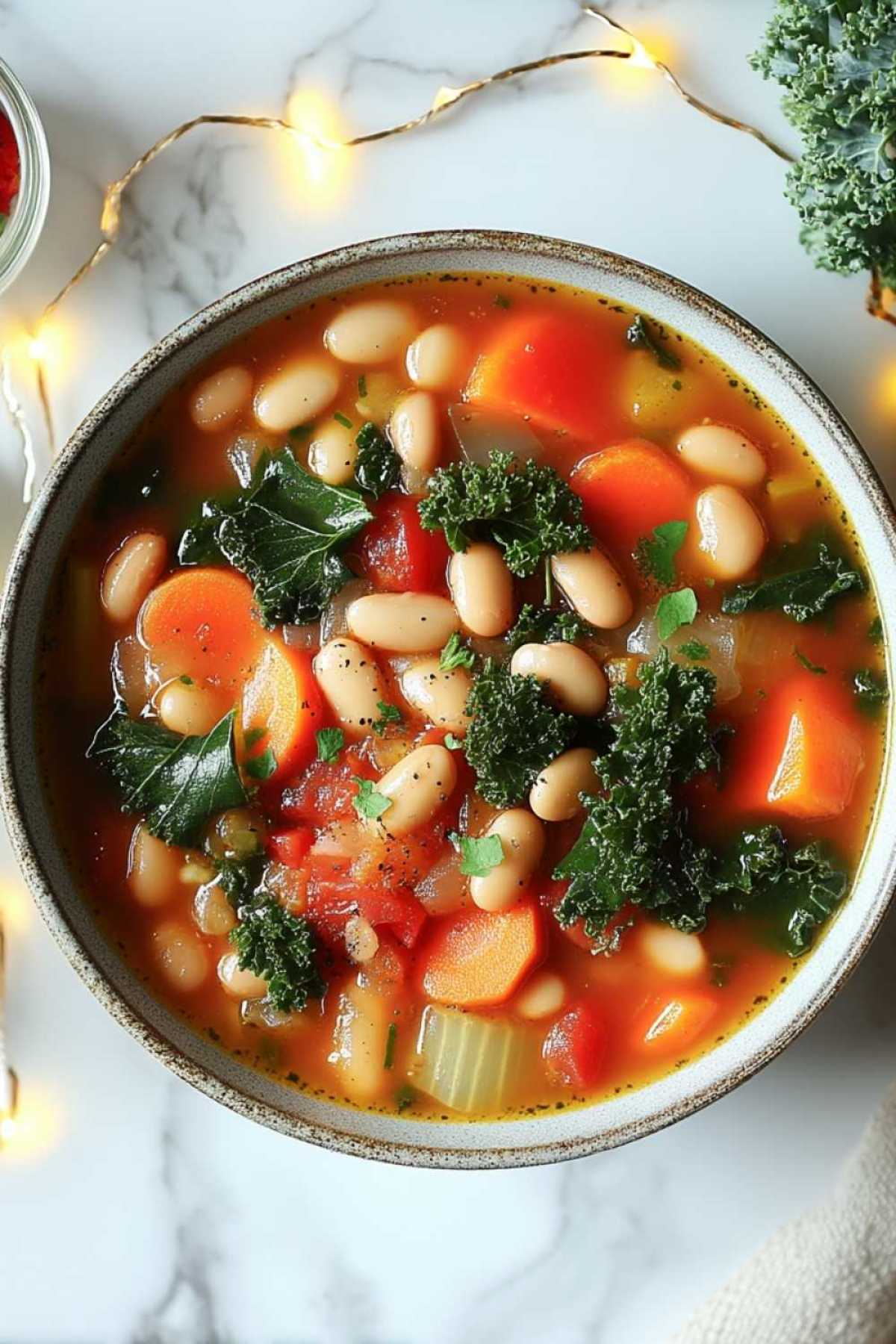
Winter Minestrone Soup
Ingredients
Equipment
Method
- Stir in diced tomatoes, vegetable broth, rinsed and drained cannellini beans, small pasta, chopped kale (stems removed), Italian seasoning, 1/2 teaspoon salt, and pepper.
- Bring the mixture to a boil over medium-high heat, which should take about 5 minutes.
- Reduce heat to low and simmer gently for 20 minutes, or until pasta is tender when you bite into it.
- Taste around the 15-minute mark and adjust salt and pepper as needed. Let rest for 5 minutes off heat before serving to allow flavors to meld.
Notes
Perfect Partners for Winter Minestrone Soup
- Crusty Italian bread or garlic bread provides the perfect vehicle for soaking up every last drop of flavorful broth, and the contrast between crunchy crust and soft interior complements the soup’s hearty texture.
- Simple green salad with vinaigrette offers a fresh, crisp counterpoint to the warm, comforting soup – I like using mixed greens with a tangy lemon dressing.
- Garlic Parmesan Roasted Broccoli adds extra vegetables and a slightly caramelized flavor that pairs beautifully with the tomato-based broth.
- Crispy Smashed Potatoes with Garlic Herbs provide a fun textural element that makes the meal feel more special, perfect for when you have guests.
- Grilled Corn on the Cob with Garlic Herb Butter brings a sweet, charred note that complements the savory Italian flavors.
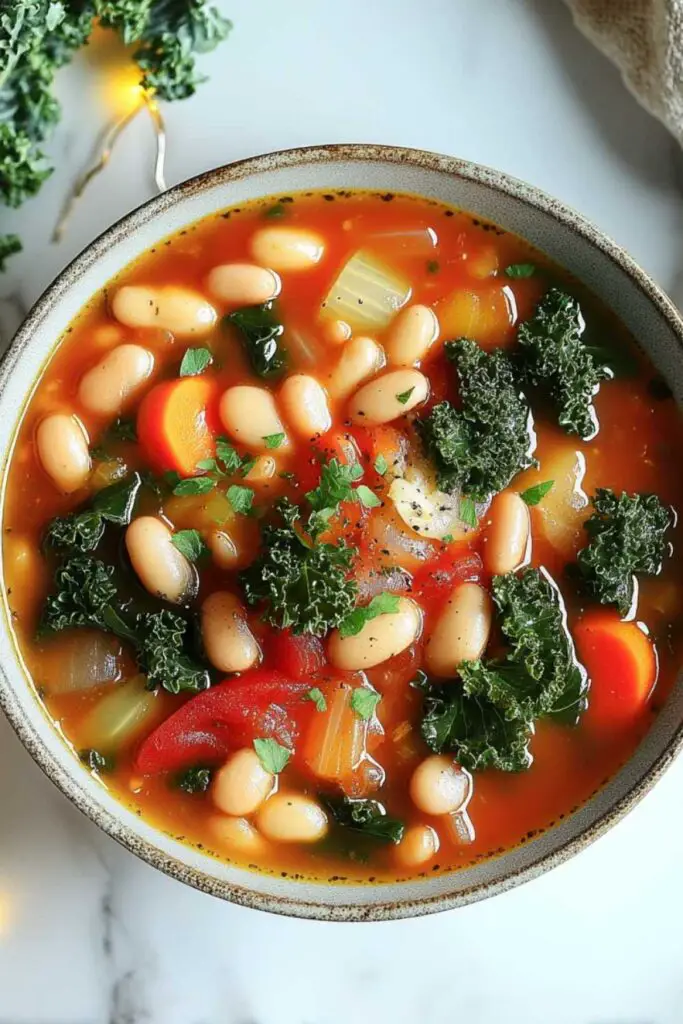
FAQs
Can I substitute other beans for cannellini beans?
I recommend white beans like navy beans or great northern beans as they have a similar creamy texture, though chickpeas or kidney beans work well too if that’s what you have on hand.
What if I don’t have kale?
Many home cooks find success with spinach, Swiss chard, or even frozen chopped spinach – just add leafy greens during the last few minutes of cooking to prevent overcooking.
Can I make this soup ahead of time?
Betty’s solution is to prepare the soup up to 2 days in advance, storing it in the refrigerator and reheating gently on the stovetop when ready to serve.
How do I prevent the pasta from getting mushy?
To prevent this issue, either cook the pasta separately and add it to individual bowls when serving, or slightly undercook the pasta in the soup knowing it will continue softening as it sits.
Can I use a different type of pasta?
The best approach I’ve tested is using any small pasta shape like elbow macaroni, orzo, or small shells – they all work beautifully in winter minestrone soup.
Is this soup freezer-friendly?
I typically freeze this soup successfully for up to 3 months, though the pasta texture changes slightly – for best results, consider freezing without pasta and adding fresh pasta when reheating.
What other soups pair well with this meal?
If you’re looking for more warming options, try my Broccoli Cheddar Soup, Lasagna Soup, or Creamy Chicken Gnocchi Soup for variety throughout the week.
